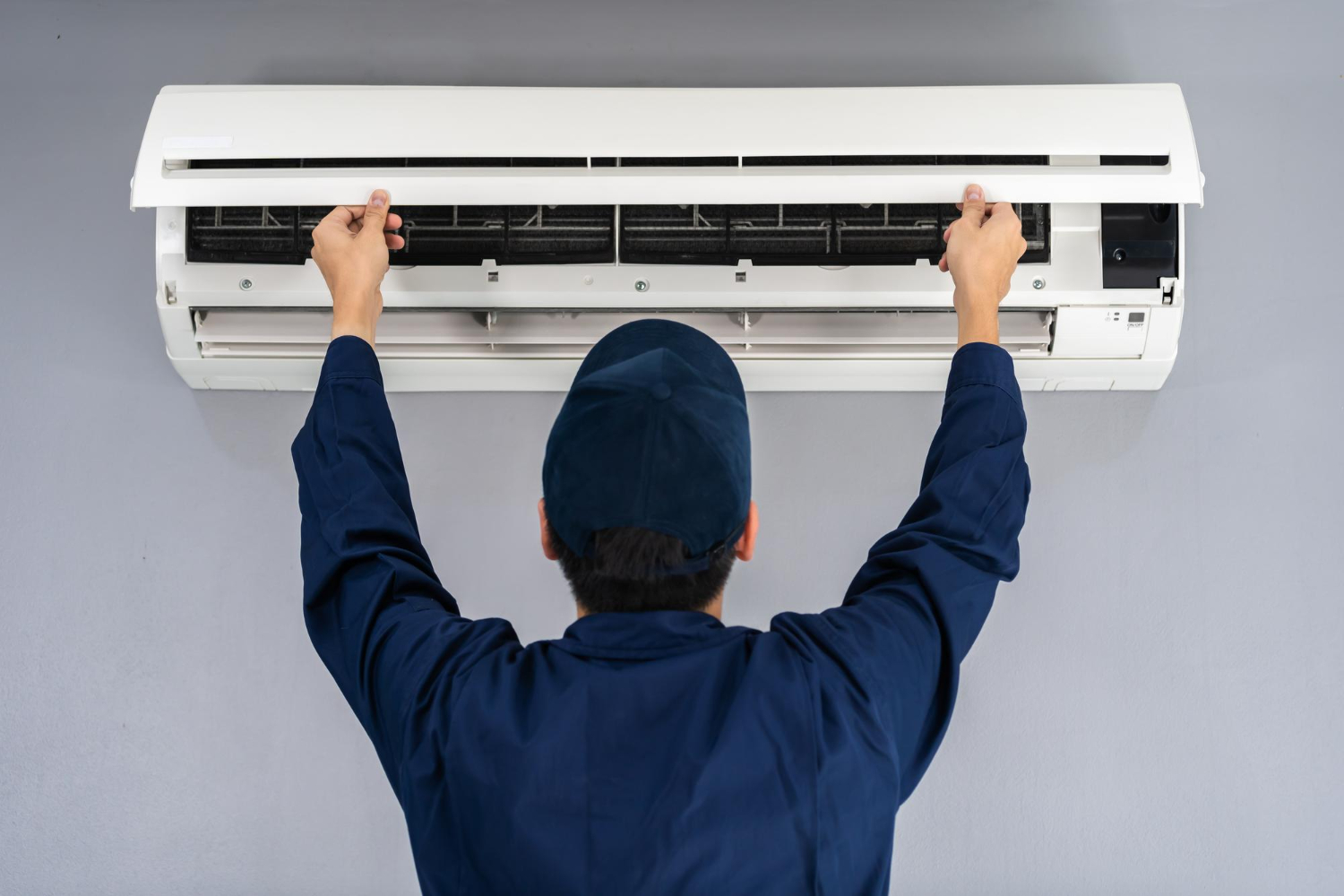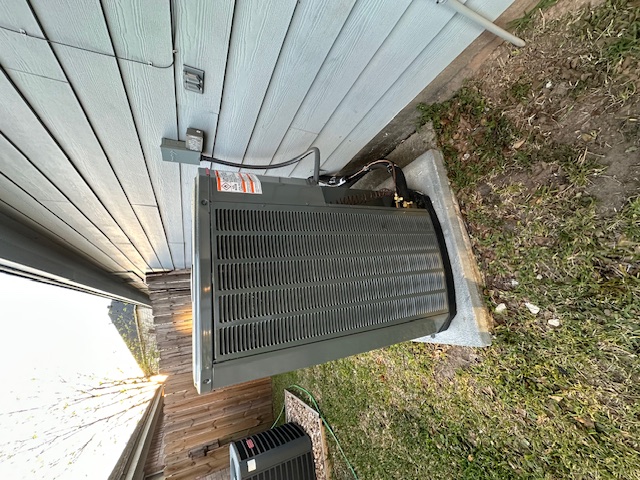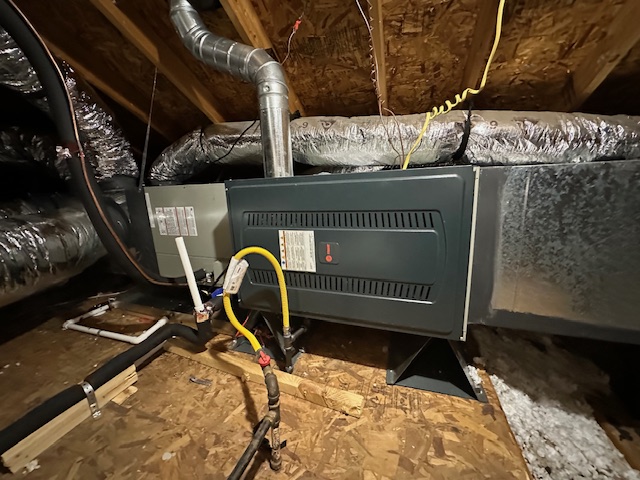Installing an air conditioning system doesn't have to drain your bank account. Homeowners can have affordable home ac installation by understanding the factors that influence pricing and making strategic decisions about timing, equipment selection, and contractor choice.
Smart homeowners can save hundreds or even thousands of dollars on AC installation by comparing multiple contractor quotes, choosing the right unit size for their space, and scheduling installation during off-peak seasons. The key lies in balancing upfront costs with long-term energy efficiency to maximize value.
From understanding what drives installation pricing to identifying the most cost-effective equipment options, there are multiple strategies homeowners can use to make AC installation more affordable.
In this article, you’ll learn how to plan and secure affordable home ac installation without sacrificing efficiency, safety, or long-term value.
Here’s what you’ll find below:
- What makes AC installation more affordable
- Comparing quotes from HVAC contractors
- Finding the right AC unit for your budget
- Timing your installation for better savings
- Horizon air solutions: Houston's trusted choice for affordable AC installs
The timing of installation, contractor selection process, and unit specifications all play crucial roles in determining the final cost of keeping your home comfortable year-round.
What makes AC installation more affordable
Several key factors determine the final price of AC installation, while balancing quality with cost-effectiveness ensures long-term value. Smart technology investments can significantly reduce operating expenses over time.
Factors that affect the total AC installation cost
Unit size and type play the largest role in determining AC installation cost. Smaller homes typically require 1.5 to 2-ton units, while larger homes need 3 to 5-ton systems.
Central air conditioning units cost more upfront but provide whole-home cooling. Window units represent the cheapest AC installation option for single rooms.
Existing ductwork condition significantly impacts installation expenses. Homes with damaged or missing ducts require additional work, increasing labor costs by $2,000 to $5,000.
According to ENERGY STAR, in a typical home 20–30% of the air moving through the duct system is lost to leaks, holes, and poor connections—sealing and insulating ducts can meaningfully cut cooling costs.
Electrical system compatibility affects pricing when older homes need panel upgrades. Most modern AC units require dedicated 240-volt circuits that may not exist in older properties.
Installation complexity varies based on unit placement and accessibility. Ground-level installations cost less than rooftop or basement installations due to easier equipment access.
Local labor rates differ by region, with urban areas typically charging 15-25% more than rural locations. Peak summer installations also command higher prices due to increased demand.
When cheapest doesn't mean best: quality vs. savings
Low-cost units often lack essential features like variable-speed compressors and advanced filtration systems. These basic models consume 30-40% more energy than higher-efficiency alternatives.
Warranty coverage varies dramatically between budget and premium brands. Cheap units typically offer 1-2 year warranties, while quality systems provide 10-year coverage on major components.
Installation quality matters more than equipment price for long-term performance. Poor installation reduces efficiency by up to 30% and shortens system lifespan significantly.
According to the U.S. Department of Energy, improper HVAC installation practices, like incorrect refrigerant charge, low airflow, or leaky ductwork, can increase energy use by up to 30%.
Energy efficiency ratings directly impact monthly operating costs. A 16 SEER unit costs $200-400 more initially but saves $300-500 annually compared to 13 SEER models.
Repair frequency increases with lower-quality equipment. Budget units require service calls 2-3 times more often than mid-range or premium systems within five years.
Smart upgrades that lower long-term costs
Programmable thermostats reduce energy consumption by 10-15% through automated temperature scheduling. Smart thermostat systems learn household patterns and optimize cooling cycles automatically.
According to the U.S. Department of Energy, setting your thermostat back 7–10°F for 8 hours a day can save up to 10% per year on heating and cooling, savings you can automate with a programmable or smart thermostat.
Variable-speed compressors adjust cooling output to match demand, consuming 25-30% less energy than single-speed models. These units also maintain more consistent temperatures and reduce humidity better.
Proper insulation upgrades maximize AC efficiency by preventing cool air loss. Adding R-38 attic insulation reduces cooling costs by 15-20% in most climates.
Zoning systems allow cooling only occupied areas, cutting energy usage by 20-30%. Multi-zone installations work particularly well in larger homes with varying occupancy patterns.
High-efficiency air filters improve indoor air quality while protecting equipment from dust buildup. Clean systems operate more efficiently and require less maintenance over time.
Comparing quotes from HVAC contractors
Getting multiple quotes allows homeowners to identify price differences and ensure they receive quality installation services. Smart comparison involves examining hidden costs, asking targeted questions, and understanding what separates licensed professionals from budget alternatives.
How to spot hidden fees in AC install estimates
HVAC contractors often include additional costs that aren't immediately visible in their initial quotes. These fees can significantly increase the total installation price.
Permit and inspection fees frequently appear as separate line items. Many contractors don't include these mandatory costs in their base quotes. Permits typically range from $50 to $200 depending on local requirements.
Equipment delivery charges represent another common hidden expense. Some companies charge $100 to $300 for transporting units to the installation site. This fee should be clearly stated upfront.
Electrical work modifications often require additional costs. Older homes may need panel upgrades or new circuits to support modern AC units. These electrical changes can add $500 to $1,500 to the project.
Common Hidden Fees
Typical Cost Range
Permits
$50 - $200
Delivery
$100 - $300
Electrical upgrades
$500 - $1,500
Ductwork modifications
$200 - $1,000
Ductwork modifications represent significant potential costs. Contractors may quote only the unit installation while excluding necessary duct repairs or replacements.
Questions to ask before hiring an HVAC contractor
Asking specific questions helps homeowners evaluate contractor qualifications and avoid future problems. These inquiries reveal important details about the installation process and company reliability.
License and insurance verification should be the first priority. Ask for license numbers and proof of liability insurance. Valid licenses ensure contractors meet local requirements and safety standards.
Equipment warranties and coverage need clear explanation. Find out what manufacturer warranties apply and what additional coverage the contractor provides. Most quality units include 5 to 10-year manufacturer warranties.
Timeline and scheduling details prevent delays and confusion. Ask about start dates, completion timeframes, and what factors might cause delays. Professional contractors provide realistic schedules and communicate potential issues.
Subcontractor involvement should be disclosed upfront. Many companies use subcontractors for electrical or ductwork portions. Understanding who performs each task helps ensure quality control.
Post-installation support varies significantly between companies. Ask about maintenance services, emergency repair availability, and response times for service calls.
What licensed pros include that budget installers don't
Licensed HVAC contractors provide comprehensive services and protections that budget installers typically omit. These differences affect both installation quality and long-term system performance.
Proper load calculations ensure correct system sizing for each home. Licensed professionals perform detailed calculations considering square footage, insulation, window types, and local climate factors. Budget installers often skip this crucial step.
Code compliance and permits represent standard practice for licensed contractors. They understand local building codes and obtain necessary permits. Professional HVAC contractor services ensure installations meet safety requirements.
Quality equipment sourcing distinguishes professional installers. Licensed contractors have relationships with reputable manufacturers and access to commercial-grade equipment. They also provide proper warranty registration and support.
Comprehensive testing and commissioning verify system operation before completion. Licensed pros test refrigerant levels, airflow rates, electrical connections, and thermostat calibration. This thorough process prevents future problems.
Ongoing service relationships extend beyond installation day. Licensed contractors offer maintenance programs, priority service scheduling, and familiar technicians who understand the installed system.
Finding the right AC unit for your budget
Selecting an air conditioning system involves balancing upfront costs with long-term performance and efficiency. Different system types offer distinct advantages at varying price points, while proper sizing and available incentives can significantly impact overall value.
Pros and cons of different system types
Central Air Systems represent the most common choice for whole-home cooling. These systems typically cost $3,000 to $7,000 installed and work efficiently in homes with existing ductwork.
Central air provides consistent temperatures throughout the house and operates quietly. However, energy losses through ducts can reduce efficiency by 20-30%, and the systems require regular duct maintenance.
Ductless Mini-Split Systems offer targeted cooling without ductwork requirements. Installation costs range from $2,500 to $6,000 depending on the number of indoor units needed.
Mini-split systems excel in energy efficiency and allow individual room control. They install easily in older homes without existing ducts.
The main drawbacks include higher upfront costs per room and visible indoor units that some homeowners find aesthetically challenging.
Window and Portable Units cost $200 to $800 each but only cool single rooms. These units work well for apartments or specific cooling needs but consume more energy per square foot than permanent systems.
How to match AC size and efficiency to your home
Proper AC sizing prevents energy waste and ensures adequate cooling performance. Systems are measured in tons, with each ton cooling approximately 400-600 square feet.
Home Size Guidelines:
- 1,000 sq ft: 2 tons
- 1,500 sq ft: 2.5-3 tons
- 2,000 sq ft: 3.5-4 tons
- 2,500 sq ft: 4.5-5 tons
SEER ratings indicate energy efficiency, with higher numbers meaning lower operating costs. Standard units start at 14 SEER, while high-efficiency models reach 20+ SEER.
According to the U.S. Department of Energy, upgrading to high-efficiency air conditioners and taking complementary actions can reduce cooling energy use by 20–50%.
Climate factors significantly impact sizing requirements. Homes in hot, humid regions need larger capacity systems than those in moderate climates.
Insulation quality, window types, and sun exposure also affect cooling needs. Professional load calculations account for these variables to determine optimal system size.
When rebates and financing can make a big difference
Federal tax credits currently offer up to $2,000 for qualifying high-efficiency AC installations. Many systems with 16+ SEER ratings qualify for these incentives.
State and utility rebates add additional savings opportunities. Some programs provide $500 to $1,500 rebates for ENERGY STAR certified equipment.
Common Financing Options:
- Manufacturer 0% APR programs (12-60 months)
- HVAC contractor payment plans
- Personal loans through banks
- Home equity lines of credit
Seasonal timing affects both pricing and availability. Spring installations often cost 10-15% more due to high demand, while fall and winter installations frequently include promotional pricing.
Energy savings from high-efficiency units can offset higher upfront costs within 5-8 years. Calculate monthly energy savings against increased equipment costs to determine long-term value.
Timing your installation for better savings
Strategic timing can reduce AC installation costs by hundreds or thousands of dollars. Peak season installations carry premium pricing, while off-season bookings offer significant discounts and better technician availability.
Best seasons to book for lower AC install rates
Spring and fall represent the optimal windows for AC installation savings. During these months, HVAC contractors experience lower demand and offer competitive pricing to maintain steady business flow.
Spring installations (March-May) provide several advantages:
- 20-30% lower costs compared to summer rates
- Better technician availability and scheduling flexibility
- Time to address any issues before peak cooling season
Fall installations (September-November) offer similar benefits:
- End-of-season equipment discounts
- Contractors eager to book work before winter slowdown
- Opportunity to test systems before next summer
Season
Cost Savings
Availability
Weather Conditions
Spring
High
Excellent
Mild temperatures
Fall
High
Excellent
Comfortable weather
Summer
None
Limited
Extreme heat
Winter
Moderate
Good
Cold conditions
Booking during shoulder seasons also means avoiding the stress of AC breakdowns during summer when replacement units are in highest demand.
How planning ahead can avoid rush charges
Advanced planning eliminates costly rush fees and provides leverage for better pricing negotiations. Contractors typically charge 15-25% more for expedited installations during busy periods.
Six-week advance booking allows contractors to:
- Schedule installations during regular business hours
- Order equipment at standard shipping rates
- Assign experienced technicians rather than subcontractors
Pre-season scheduling benefits include:
- Fixed pricing protection against seasonal rate increases
- Priority placement on installation calendars
- Time for proper system sizing and ductwork evaluation
Homeowners who plan installations around pre-season maintenance can often bundle services for additional discounts. This approach ensures optimal system performance from day one.
Early planning also provides time to research rebates, financing options, and energy efficiency incentives that can offset installation costs.
Why emergency installs tend to cost more
Emergency AC installations carry premium pricing due to immediate demand and limited contractor availability. These urgent replacements can cost 40-60% more than planned installations.
Premium pricing factors include:
- After-hours and weekend labor rates
- Expedited equipment shipping costs
- Limited contractor selection during peak demand
- Rushed installation without proper system optimization
Emergency situations often arise from neglected maintenance issues. AC units blowing warm air or experiencing frequent breakdowns signal impending failure.
Additional emergency costs:
- Temporary cooling solutions while awaiting installation
- Express delivery fees for replacement equipment
- Overtime labor charges for immediate installation needs
Summer emergencies create the worst-case scenario for homeowner budgets. Contractors may require full payment upfront during peak season, eliminating financing flexibility that planned installations typically offer.
Preventive replacement of aging systems helps homeowners avoid these costly emergency scenarios entirely.
Horizon air solutions: Houston's trusted choice for affordable AC installs
Horizon Air Solutions stands out in Houston's competitive HVAC market by combining upfront pricing transparency with flexible financing options.
he company's commitment to customer satisfaction and no-surprise billing has earned them strong trust among local homeowners seeking value-driven cooling solutions.
Transparent pricing with no surprise fees
Horizon Air Solutions provides upfront pricing before any work begins on AC installations. This approach eliminates the common industry practice of hidden charges and unexpected costs that can inflate final bills.
The company's technicians evaluate each home's specific cooling needs and provide detailed written estimates. These estimates include all labor costs, equipment prices, and any additional materials required for proper installation.
Homeowners receive complete breakdowns of installation costs without pressure tactics or bait-and-switch pricing strategies. This transparency allows families to budget accurately for their new cooling system.
The upfront pricing model extends to potential complications that may arise during installation. Technicians identify possible challenges during initial assessments and factor these considerations into original quotes.
Fitting options and seasonal discounts available
The company offers financing plans that make high-efficiency AC systems accessible to more Houston households. Qualified customers can secure financing for up to 60 months on premium cooling equipment purchases.
These financing options include competitive interest rates and flexible payment terms based on approved credit. Homeowners can upgrade to energy-efficient systems without large upfront investments.
Seasonal promotions provide additional savings opportunities throughout the year. Spring installations often feature discounted rates before peak summer demand increases pricing across the industry.
Financing Benefits:
- Extended payment terms up to 5 years
- Competitive interest rates for qualified buyers
- No penalty for early payment completion
- Quick approval process for most applicants
Why Houston homeowners trust Horizon for smart savings and comfort
Houston residents choose Horizon Air Solutions for their proven track record of reliable installations and customer-focused service. The company maintains a 4.8-star rating from local customers who value their professional approach.
Well-trained technicians complete installations efficiently while ensuring proper system sizing for each home's cooling requirements. This attention to detail prevents common issues like inadequate cooling or excessive energy consumption.
The company's focus on preventative maintenance helps customers avoid costly emergency repairs during Houston's intense summer heat. Regular service plans keep new systems running at peak efficiency for years after installation.
Horizon's commitment to customer satisfaction includes warranty protection on both equipment and installation work. This comprehensive coverage provides peace of mind for homeowners investing in new cooling systems.
Conclusion
Smart planning makes AC installation affordable without compromising quality. Homeowners who research unit types, compare multiple quotes, and understand installation factors achieve better value.
The type of AC system significantly impacts total costs. Central air requires higher upfront investment but offers whole-home cooling. Window units and mini-splits provide targeted cooling at lower initial costs.
Energy-efficient models cost more initially but reduce monthly utility bills. SEER ratings above 16 deliver substantial long-term savings. Affordable AC services often include maintenance plans that extend equipment life.
Professional installation ensures proper performance and warranty coverage. Licensed contractors handle refrigerant connections, electrical work, and local code compliance safely.
Financing options make quality systems accessible. Many contractors offer payment plans or seasonal promotions. Energy rebates from utilities or government programs further reduce net costs.
Proper sizing prevents energy waste and comfort issues. Oversized units cycle frequently, while undersized systems struggle to cool effectively.
Schedule your affordable home AC installation with Horizon Air Solutions—request a line-item estimate today to ensure proper sizing, permits, and full warranty coverage.











